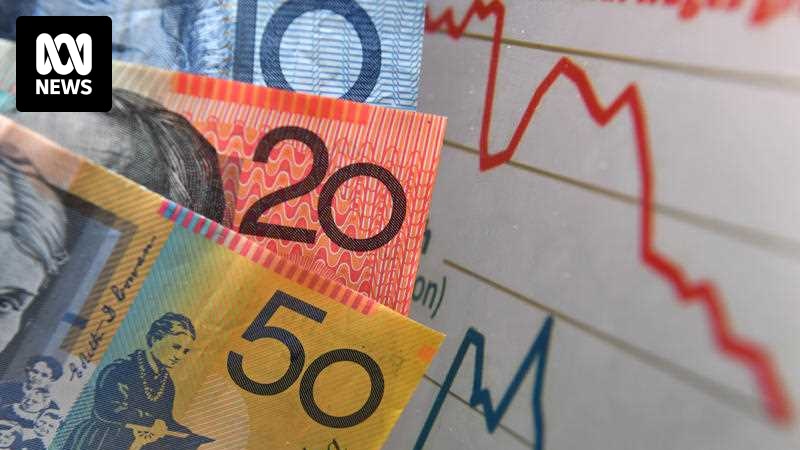Inflation eased further last month, with consumer prices rising 2.1 per cent over the year to May, down from 2.4 per cent the previous month.
According to the Australian Bureau of Statistics, the monthly Consumer Price Index (CPI) was at its lowest level since October 2024.
The annual trimmed mean, a measure of underlying inflation, was down to 2.4 per cent in May, from 2.8 per cent in April, which the ABS said was its lowest rate since November 2021.
Ahead of the data release, market pricing put the chance of an interest rate cut in July around 81 per cent, according to LSEG.
Following the weaker-than-expected figures, pricing rose to an 88 per cent chance.
The Reserve Bank next meets to consider interest rates in just under a fortnight’s time.
“Underlying inflation sits comfortably within the RBA’s target, allowing the RBA to cut rates again with confidence that inflation is under control,” economist Callam Pickering, from job site Indeed, said.
He noted that “even a less favourable set” of inflation figures might have been overlooked by the RBA and not been a barrier to a rate cut, given the concerns about the global economic outlook.
“The RBA will need to cut rates at least another couple of times this year to provide sufficient support to households and businesses, while ensuring that the unemployment rate remains low and we avoid recession,”
he said.
Mr Pickering has forecast a 0.25 percentage point cut on July 8, followed by another move lower in either August or September.
Commonwealth Bank economists were among those shifting their rate cut forecasts forward in the wake of the CPI data.
“We now expect the RBA to cut the cash rate in July and August this year (from August and September),” CBA economist Harry Ottley wrote, describing inflation as remaining “benign” in the second quarter.
“There is a clear risk of a further cut late this year or early next.”
Deutsche Bank chief economist Phil O’Donaghoe also changed his call to July, along with further cuts in August and November.
“Our terminal rate this easing cycle remains at 3.1 per cent, so we now see the RBA arriving there in November, rather than February,”
he noted.Grocery price rises ease off
While food and non-alcoholic beverages were the biggest contributor to the headline CPI, they rose 2.9 per cent over the year — down from 3.1 per cent in April.
Fruit and vegetables rose 2.8 per cent in the year to May, down significantly from the 6.1 per cent increase recorded a month earlier.
Looking at fruit in isolation, prices actually fell last month, down 2.7 per cent, with lower prices for mandarins, oranges, avocados and apples.
Fruit prices fell in May, including for mandarins and oranges. (ABC: Jessica Hayes)
Meanwhile, electricity rebates continued to impact energy costs, with electricity prices down 5.9 per cent over the 12 months to May — that was a smaller fall than the 6.5 per cent in April.
“In Victoria, the impact of these rebates was lower in May than April due to the timing of payments,” ABS head of prices statistics Michelle Marquardt noted.
Who ranks last in helping customers struggling to pay energy bills?
“Without the Commonwealth and state government rebates, electricity prices would have risen 2 per cent in the 12 months to May.”
Beatshares chief economist David Bassanese noted that the monthly CPI readings could be more volatile than the quarterly data.
The next quarterly CPI is due in late July, after the next RBA board meeting.
“The low trimmed mean result keeps the door open for a potential RBA rate cut in July, but my base case is the [Reserve] Bank will still wait until August — following confirmation of low underlying inflation in the more comprehensive and reliable quarterly CPI report in late July,” he wrote.
“All up, however, the underlying trend for inflation still appears downward which is good news for the many millions of Australian still counting on further mortgage rate relief in coming months.”
Mortgage arrears rise from record lows
However, Mr Bassanese warned that any easing in affordability for first home buyers would likely be short-lived because he expected lower mortgage rates to filter through to higher house prices.
Annual housing inflation eased back to 2 per cent in May, down from 2.2 per cent in April.
Rents rose 4.5 per cent over the year, down from 5 per cent a month earlier.
“This is the lowest annual growth in rental prices since December 2022, consistent with smaller increases in advertised rents and stable vacancy rates across most capital cities,” the ABS noted.
New dwelling price rises also cooled to the smallest annual growth since April 2021, which the ABS attributed to “project home builders offer[ing] discounts and promotional offers to entice business.”
